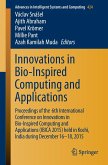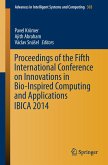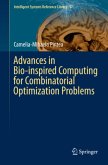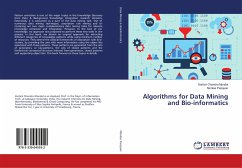Seeking new methods to satisfy increasing communication demands, researchers continue to find inspiration from the complex systems found in nature. From ant-inspired allocation to a swarm algorithm derived from honeybees, Bio-Inspired Computing and Networking explains how the study of biological systems can significantly improve computing, networking, and robotics.
Containing contributions from leading researchers from around the world, the book investigates the fundamental aspects and applications of bio-inspired computing and networking. Presenting the latest advances in bio-inspired communication, computing, networking, clustering, optimization, and robotics, the book considers state-of-the-art approaches, novel technologies, and experimental studies, including bio-inspired:
Optimization of dynamic NP-hard problemsTop-down controller design for distributing a robot swarm among multiple tasksSelf-organizing data and signals cellular systemsDynamic spectrum access in cognitive radio networksQoS-aware architecture for scalable, adaptive, and survivable network systemsLocomotion control of the Hexapod Robot Gregor III
The book explores bio-inspired topology control and reconfiguration methods, as well as bio-inspired localization, synchronization, and mobility approaches. Providing wide-ranging coverage that includes past approaches, current challenges, and emerging concepts such as the evolution and self-healing of network architectures and protocols, this comprehensive reference provides you with the well-rounded understanding you need to continue the advancement of the development, design, and implementation of bio-inspired computing and networking.
Containing contributions from leading researchers from around the world, the book investigates the fundamental aspects and applications of bio-inspired computing and networking. Presenting the latest advances in bio-inspired communication, computing, networking, clustering, optimization, and robotics, the book considers state-of-the-art approaches, novel technologies, and experimental studies, including bio-inspired:
Optimization of dynamic NP-hard problemsTop-down controller design for distributing a robot swarm among multiple tasksSelf-organizing data and signals cellular systemsDynamic spectrum access in cognitive radio networksQoS-aware architecture for scalable, adaptive, and survivable network systemsLocomotion control of the Hexapod Robot Gregor III
The book explores bio-inspired topology control and reconfiguration methods, as well as bio-inspired localization, synchronization, and mobility approaches. Providing wide-ranging coverage that includes past approaches, current challenges, and emerging concepts such as the evolution and self-healing of network architectures and protocols, this comprehensive reference provides you with the well-rounded understanding you need to continue the advancement of the development, design, and implementation of bio-inspired computing and networking.








